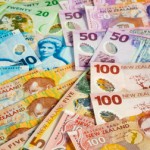Gold extended a drop from 17-week high as better-than-expected US housing data added to expectations the Federal Reserve will keep reducing stimulus in measured steps, before exiting the program at the end of the year. Assets in the SPDR Gold Trust, the biggest bullion-backed ETF, were unchanged yesterday after gaining for three days, the longest streak of gains since November 2012 and were poised for the first monthly increase since December 2012.
On the Comex division of the New York Mercantile Exchange, gold futures for settlement in April fell by 0.26% to trade at $1 324.60 per troy ounce by 08:15 GMT. Futures touched a session high at $1 331.30 per troy ounce, while day’s low was touched at $1 324.20 an ounce. Yesterday, prices touched $1 345.50 per troy ounce, the strongest level since October 30.
The yellow metal settled last week 0.4% higher, after a 4.1% advance in the previous 5-day period, the biggest weekly gain since the period ended August 16. Gold futures are up 10% this year and are poised for the first back-to-back monthly increase since the two-months through August, after a recent unrest in emerging markets, including Ukraine, and signs of slowing US growth, boosted demand for haven assets.
However, the precious metal settled last year 28% lower, the steepest annual decline since 1981 as investors lost faith in the metal as a store of value and amid speculation Fed will continue scaling back its monetary stimulus throughout 2014.
Tensions in Ukraine, especially in Crimea region, continue to rise, which forced the Russian President Vladimir Putin to order military exercises. Today, Ukrainian lawmakers are expected to approve Arseniy Yatsenyuk as prime minister after three months of unrest, which ended up in last week’s ouster of the President Viktor Yanukovych.
“Bullion fell from investor profit-taking as U.S. home sales rose to a five year high,” James Steel, an analyst at HSBC Securities (USA) Inc., wrote in a note, cited by Bloomberg. “The gold decline was cushioned by Eastern Europe tensions. Gold may also have been modestly supported by a move back to flat in the Shanghai Gold Exchange from a recent dip to discount.”
Chinese demand
On the Shanghai Gold Exchange, trading volumes for spot bullion of 99.99 percent purity declined yesterday from a two-week high on February 25, as bullion for immediate delivery traded at a premium to London prices for the first time in 5 days.
Higher bullion prices have hurt demand in China, which according to data by the World Gold Council released last week, overtook India as the largest global consumer last year, consuming a record 1 066 tons.
Fed stimulus outlook
Gold prices were pressured after a report revealed new home sales in the US reached a five-year high last year, which backed the case for further cuts in Fed stimulus.
Yesterday, official data revealed that for all of 2013, demand for US homes surged by 16.3% to reach a five-year high of 428 000.
The US Census Bureau reported today that nation’s new home sales rose by 9.6% to reach annualized level of 0.468 million in January, confounding analysts’ expectations for a 1% drop to 0.400 million. At the same time, December’s reading was revised upwards to 0.427 million units from previously estimated 0.414 million units. The current housing market conditions seemed to improve as January’s reading was the strongest since June 2013, easing concerns over the US economic outlook.
The better-than expected data, reinforced speculation Federal Reserve Chair Janet Yellen will back stimulus taper in her testimony before the Senate later today.
Federal Reserve Chair Janet Yellen is expected to take a statement before the Senate Banking Commission, while investors await the central bank’s view on the economic impact of severe weather. Yellen said earlier in February that US economy has gained enough strength in order to withstand reduction of monetary stimulus.
However, earlier in the week, few downbeat US reports spurred speculations that the US economy may slow its growth, fueling demand for gold as a store of value.
The Conference Board research group announced the results from its monthly survey on US consumer confidence on Tuesday, with the corresponding index coming in at 78.0 in February, trailing analysts’ projections of a smaller decline to 80.0 and down from 80.7 in the preceding month.
Consumer confidence, as an indicator, provides clues regarding the tendency in consumer spending in the country, while the latter accounts for almost two thirds of nation’s Gross Domestic Product.
In addition, the S&P/Case-Shiller Home Price Index, which measures the change in selling prices of homes in 20 large cities in the US, rose at an annualized pace of 13.42% in December from a year ago, compared to a 13.71% increase in the previous month, the biggest increase since February 2006. Analysts had predicted a 13.38% advance. On a monthly basis, US home prices declined 0.1% in December, in line with analysts’ forecasts and after falling 0.1% in November.
The Federal Reserve announced in December that it will pare monthly bond-buying purchases by $10 billion, after which it decided on another reduction of the same size at the meeting on policy in January, underscoring that labor market indicators, which “were mixed but on balance showed further improvement”, while nation’s economic growth has “picked up in recent quarters.”
The central bank will probably continue to pare stimulus by $10 billion at each policy meeting before exiting the program in December, according to a Bloomberg News survey of 41 economists, conducted on January 10th.
Assets in the SPDR Gold Trust, the biggest bullion-backed ETP, remained unchanged yesterday at 803.70 tons after rising for three days, the longest streak of gains since November 2012 and were poised for the first monthly increase since December 2012. However, the fund has lost 41% of its holdings in 2013. A total of 553 tons has been withdrawn last year. Billionaire hedge-fund manager John Paulson who holds the biggest stake in the SPDR Gold Trust told clients at the end of last year that he wouldn’t invest more money in his gold fund because it isn’t clear when inflation will accelerate. However, a government report revealed that the owner of the largest stake in the SPDR Gold Trust, kept his holdings unchanged in the fourth quarter of 2013.




